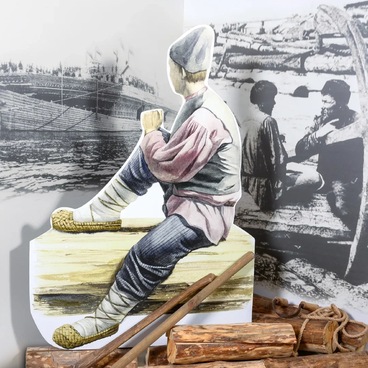In 1874, in the village of Yurino in Mari El, the construction of an eclectic castle began. It belonged to the owner of the estate who was a military man, one of the large landowners of the Nizhny Novgorod province, whose name was Vasily Sheremetev. The construction went on for over 40 years and was completed only in 1915.
The Sheremetevs brought furniture and interior items from abroad. The rooms were furnished with Venetian sofas and armchairs, decorated with antique marble statues from the excavations of the ancient city of Pompeii and paintings by famous Russian and foreign artists: Jan and Pieter Bruegel, Rembrandt, Vladimir Borovikovsky, Ivan Aivazovsky.
The castle had over 100 rooms and staterooms. On the first floor, there were Vasily Sheremetev’s office and a dining room, while the servant rooms occupied the western wing. On the second floor, there was a winter garden, a large living room, several ceremonial rooms, and the private chambers of General Mikhail Skobelev, who was the brother of Sheremetev’s wife and often visited the estate. On the third floor, there were children’s rooms, a bedroom, and a library.
Fireplaces became one of the features of the castle interiors. The artisans designed each of them so that it would not resemble the others. For example, a stone slab, which was brought from the excavations of Pompeii, was used for facing the fireplace in the Great Dining Room. In 1880, the castle owners specifically invited masters from Italy for mosaic works.
Some of the rooms in the castle were decorated following certain themes. For instance, the walls of the Chinese Dining Room were adorned with more than 200 charger hand-painted Chinese porcelain plates. In addition, the decor of the eastern room consisted of Asian designs. There were columns of malachite in the middle of it while the window frames were decorated with painted ceramics.
After the Bolshevik revolution, most of the decorations were taken from Yurino to different cities — mainly to Moscow and Nizhny Novgorod. Among those items was the collection of weapons that used to belong to Mikhail Skobelev, as well as at least a thousand paintings, sculptures, carpets and tapestries, icons in precious frames. In the 1950s, some items from the castle were donated to the Mari Museum of Local Lore, which was the name of the National Museum of the Republic of Mari El at that time. Genuine furniture from the castle was included in the interior installation.
The Sheremetevs brought furniture and interior items from abroad. The rooms were furnished with Venetian sofas and armchairs, decorated with antique marble statues from the excavations of the ancient city of Pompeii and paintings by famous Russian and foreign artists: Jan and Pieter Bruegel, Rembrandt, Vladimir Borovikovsky, Ivan Aivazovsky.
The castle had over 100 rooms and staterooms. On the first floor, there were Vasily Sheremetev’s office and a dining room, while the servant rooms occupied the western wing. On the second floor, there was a winter garden, a large living room, several ceremonial rooms, and the private chambers of General Mikhail Skobelev, who was the brother of Sheremetev’s wife and often visited the estate. On the third floor, there were children’s rooms, a bedroom, and a library.
Fireplaces became one of the features of the castle interiors. The artisans designed each of them so that it would not resemble the others. For example, a stone slab, which was brought from the excavations of Pompeii, was used for facing the fireplace in the Great Dining Room. In 1880, the castle owners specifically invited masters from Italy for mosaic works.
Some of the rooms in the castle were decorated following certain themes. For instance, the walls of the Chinese Dining Room were adorned with more than 200 charger hand-painted Chinese porcelain plates. In addition, the decor of the eastern room consisted of Asian designs. There were columns of malachite in the middle of it while the window frames were decorated with painted ceramics.
After the Bolshevik revolution, most of the decorations were taken from Yurino to different cities — mainly to Moscow and Nizhny Novgorod. Among those items was the collection of weapons that used to belong to Mikhail Skobelev, as well as at least a thousand paintings, sculptures, carpets and tapestries, icons in precious frames. In the 1950s, some items from the castle were donated to the Mari Museum of Local Lore, which was the name of the National Museum of the Republic of Mari El at that time. Genuine furniture from the castle was included in the interior installation.



